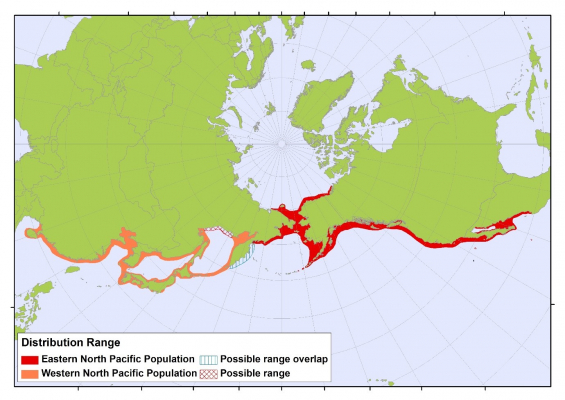Stage Two of the Gray Whale Rangewide Review
Prompted by surprising new information, the IWC held its first rangewide review workshop on North Pacific gray whales in April 2014. A year later, significant progress has been made and was reviewed at a workshop held in La Jolla, California from 1-3 April.
Until recently, available evidence had led experts to believe that the eastern and western gray whale populations remained separate, with long but distinct coastal migration routes between their breeding grounds in the south and feeding grounds in the north. Doubt was cast on this long-held understanding by an IWC satellite tagging programme. This showed that rather than remaining on the western North Pacific and moving south to breed, three animals moved across to the eastern North Pacific. This new information led scientists to undertake a major review, combining information from satellite tagging with genetic 'fingerprinting' and photo-identification.
This new information with potentially significant implications for conservation and management advice, led the Scientific Committee of the IWC to begin a Rangewide Review of population structure and status of North Pacific gray whales.
The review began in April 2014 with a workshop to assess and synthesize all available information, and begin development of a modelling framework. That workshop also identified three primary new hypotheses on whale distribution, movements and population structure. These have been incorporated into the modelling framework and tested over the last twelve months.
The latest workshop, which was also held in La Jolla, reviewed the results of the intersessional tests and worked to refine the modelling framework. While complex this programme of work will enable the IWC to update its assessment of the status of gray whales in the North Pacific and the potential impact of human activities.
For more information on the workshop, click here.

